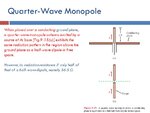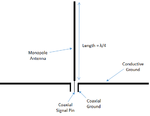simbaliya
Member level 4
I am not a RF designer, but the product I am working on has some RF feature, so I need to understand the concept of antenna.
From the schematic I received from wireless engineer, I sometimes see the monopole antenna is two terminal, one connect to ground, and the other connect to the rx/tx of bandpass filter. While there are also cases that the monopole antenna is single ended with one terminal connect to the matching circuit and then to rx/tx of bandpass filter.
I do not understand the single ended case, if the antenna signal is high frequency voltage, means you need two terminal to receive the signal at the bandpass filter, one ground plus one signal. But in the case of single ended monopole antenna, I do not see the antenna has the other terminal connected to ground, or there is no other terminal of the antenna.
So, how is that possible to receive the antenna signal with single ended connection? I think the signal are totally floating, is it?
From the schematic I received from wireless engineer, I sometimes see the monopole antenna is two terminal, one connect to ground, and the other connect to the rx/tx of bandpass filter. While there are also cases that the monopole antenna is single ended with one terminal connect to the matching circuit and then to rx/tx of bandpass filter.
I do not understand the single ended case, if the antenna signal is high frequency voltage, means you need two terminal to receive the signal at the bandpass filter, one ground plus one signal. But in the case of single ended monopole antenna, I do not see the antenna has the other terminal connected to ground, or there is no other terminal of the antenna.
So, how is that possible to receive the antenna signal with single ended connection? I think the signal are totally floating, is it?

